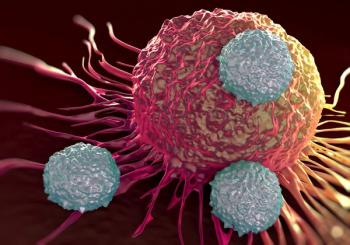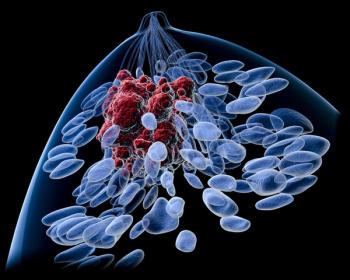
- ONCOLOGY Vol 21 No 11
- Volume 21
- Issue 11
Cancer Vaccines: A New Frontier in Prevention and Treatment
Vaccines have been exceptionally effective against diseases such as smallpox, measles, chickenpox, and polio. They are among the safest and most cost-effective agents for disease prevention. In recent years, vaccination has been considered for other diseases, including AIDS and cancer. Cancer vaccines can be categorized as preventive or therapeutic. Preventive vaccines, which are commercially available for cervical cancer and liver cancer, block infection with the causative agents of human papillomavirus and hepatitis B virus, respectively. The benefit of cancer treatment vaccines lies in their ability to "boost" the immune system response to cancer cells, which is generally low. Using vaccines in the treatment of cancer is relatively new, however, and chiefly experimental. Therapeutic vaccines for breast, lung, colon, skin, renal, prostate, and other cancers are now being investigated in clinical trials. Oncology nurses may play a significant role in reducing barriers to uptake of preventive vaccines among the general public and in increasing patients' acceptance of therapeutic cancer vaccines.
One of the most dynamic eras in understanding the role of immunomodulation and cancer management has now arrived. Cancer vaccines are vigorously being studied in hundreds of clinical trials, and as Dr. Giarelli notes, these studies offer thousands of patients hope for cure or prevention.
Jenner's observations of milkmaids' immunity to cowpox gained through exposure to cows was the sentinel event to spur worldwide immunization for disease. It was not until 1888 that New York City surgeon and Sloan-Kettering researcher William B. Coley, MD, known as the father of cancer vaccine therapy, developed a method of immunotherapy using bacterial toxins as an inoculation to cure the patient's disease.[1] As with numerous novel treatments, this discovery was met with doubt and derision. It was not until 1976 that randomized clinical trials of these mixed bacterial vaccines were initiated at Sloan Kettering Memorial Hospital.
As Dr. Giarelli discusses, oncology nurses are faced with new challenges related to the theory and practice behind this novel therapy. The first is to gain knowledge about ever-emerging research into the complex components of immunological pathways that can mount an attack on cancer cells. Though nurses practicing in research centers are the current "hands-on caregivers" of vaccine therapy, all oncology nurses need to be cognizant of the care-based and ethical issues surrounding vaccine research. Because this treatment is only available in clinical trials, vaccine-therapy candidates in the community will request accurate and current information.
Vaccines are administered in a sequence, and each step requires an appreciation of the rationale, process, and possible adverse effects. Excellent nursing literature is now appearing in peer-reviewed journals regarding management of vaccine recipients.[2–4] As the research data mature, oncology nurses will become more knowledgeable about prevention and treatment of adverse effects.
Activating the patient's immune system to prevent or treat cancer is at the heart of cancer vaccine therapy. Dr. Giarelli offers a succinct discussion of this difficult subject. Adjuvants are almost always necessary to alert the immune system to attack the patient's cancer cells. Research has validated use of stimulating dendritic cells as an adjuvant because they are most powerful antigen-presenting cell. Commonly used adjuvants are recombinant granulocyte macrophage colony stimulating factor (GM-CSF) and granulocyte stimulating factor (CSF). Oncology nurses are familiar with use of these agents to target macrophages and stimulate the immune system in neutropenic cancer patients.
As with all novel therapies, numerous research questions need to be answered before vaccine therapy becomes available in the community setting: What are the immediate and long-term side effects? What supportive therapy is needed? Which vaccine components and adjuvants are the safest, efficacious, and most cost-effective? How do clinical outcomes of vaccine treatment compare with those of standard cancer therapy?
Vaccine therapy holds a bright future for prevention and treatment of cancer, especially in patients with solid tumors. There is a mandate for oncology nurses practicing in clinical, research, education, and administration to be cognizant of vaccine therapy.
References:
1. Coley WB: A preliminary note on the treatment of inoperable sarcoma by the toxic product of erysipelas. Post-graduate 8:278-86, 1893.
2. Pazdur MP, Jones JL: Vaccines: An innovative approach to treating cancer. J Infus Nurs 3:173-178, 2007.
3. Buchsel PC, DeMeyer ES: Dendritic cells: Emerging roles in tumor immunotherapy. Clin J Oncol Nurs 10:629-640, 2006.
4. King SE: Therapeutic cancer vaccines: An emerging treatment option. Clin J Oncol Nurs 8:271-278, 2004.
Articles in this issue
about 18 years ago
Remembering Martin D. Abeloff, MDabout 18 years ago
New Lung Cancer Guidelines Oppose General CT Screeningabout 18 years ago
Martin D. Abeloff, MD: Tributes and recollectionsabout 18 years ago
FDA Approves Expanded Labeling for Alemtuzumababout 18 years ago
FDA Fast Tracks PI-88 to Treat Postresection Liver Cancerabout 18 years ago
Common Early-Warning Symptoms of Ovarian Cancer IdentifiedNewsletter
Stay up to date on recent advances in the multidisciplinary approach to cancer.

















































































